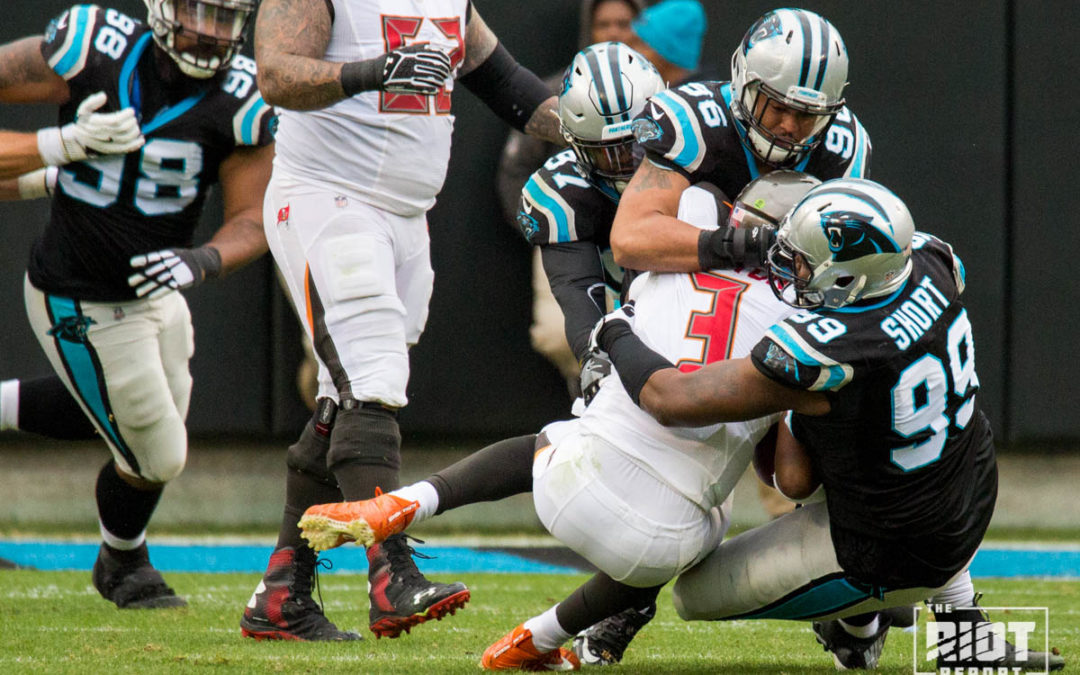While there are still going to be a handful of transactions between now and the (eventual/uncertain) start of the NFL season, the roster-building stage of the offseason is essentially over – the focus has now turned to how to make the most of the talent each team has accrued. In other words, if performance is a mixture of talent and scheme, now is the time for the scheme to begin to take shape around the talent rather than the other way around.
While a lot of what comes to mind when the word scheme is mentioned involves Xs and Os, a major part of scheme is how teams use rotations and player combinations to maximize the impact the players make over the course of games and seasons.
For the Panthers, one of the groups that has seen the most change this offseason is the defensive line: Addison, Irvin, Poe, Butler, Love and McCoy all departing in free agency and an equal number of new faces coming in – Kerr, Weatherly and Smith arriving in free agency and Brown, Gross-Matos and Roy being added through the draft.
One of the consequences of this change is that many of the rotations and roles that had become a constant during Ron Rivera’s tenure are likely to be completely reshaped. With this in mind, what clues have the Panthers’ coaches and front office given us about what the Panthers’ defensive line is going to look like in 2020, and what might we be able to fill the remaining gaps with?
The Starters
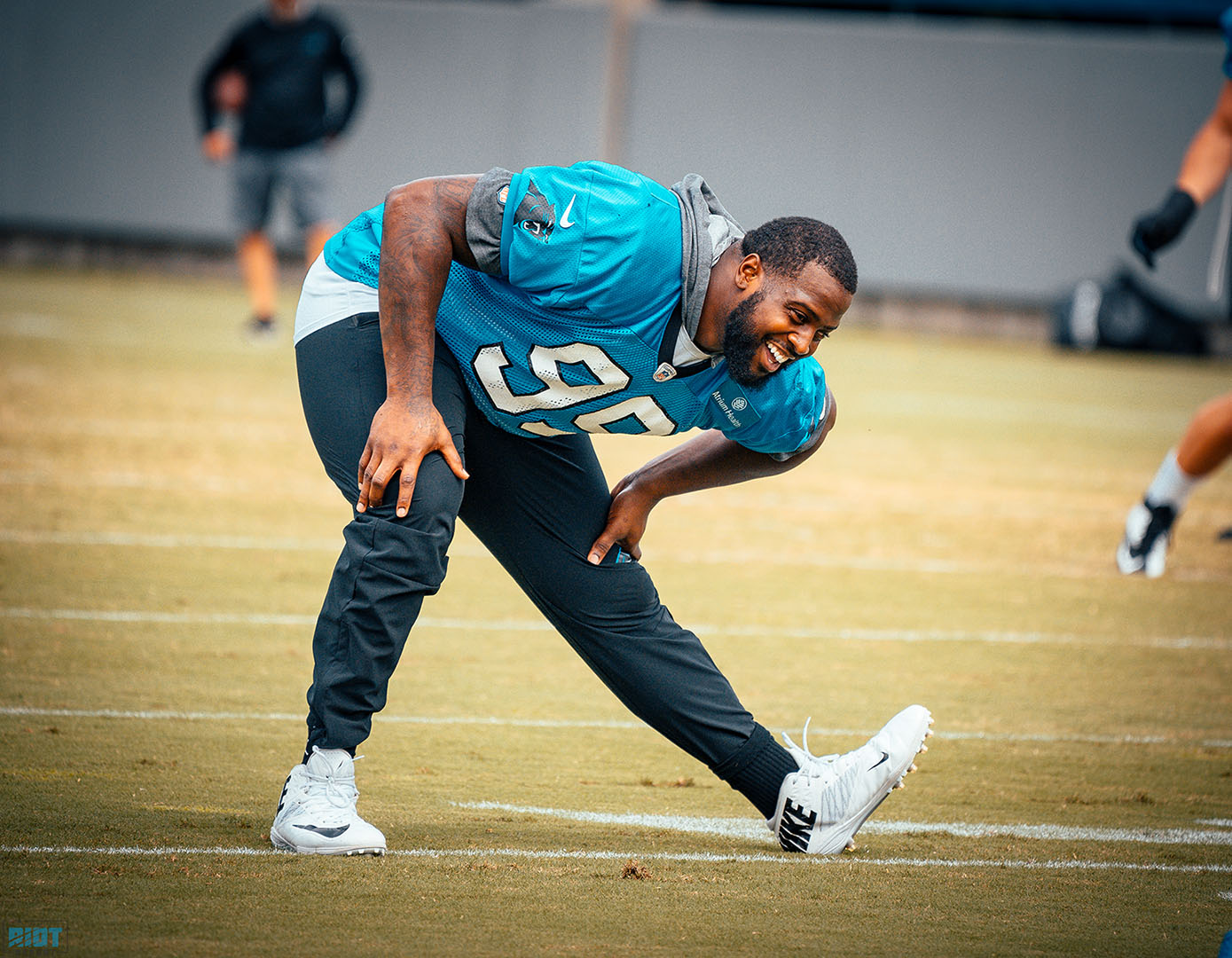
One thing that is not expected to cause a huge amount of controversy is the starting lineup, with the team’s 2019 and 2020 first round picks – Brian Burns and Derrick Brown – joining long-term starter KK Short and free agency acquisition Stephen Weatherly as the expected starting four. While the team is expected to be somewhat multiple upfront, Matt Rhule was pretty unequivocal about whether they were going to primarily run a four or three-man front as their “base” defense.
“We’re going to be more of a base 4-3,” said Rhule. “Even the way the NFL is going, even the 3-4 teams have to leave the four-down front (on the field) anyway.”
Given this, Short and Brown starting inside together should be a pretty obvious outcome, and Panther fans should certainly be optimistic about the effect that pairing the 2020 seventh overall pick with one of the most prolific interior defensive linemen of the past decade might have. On the edge, what Brian Burns will look like with an offseason in the weight room to help cope with the move to being a full-time starter is hard to know, but having been extremely productive in a rotation role last season – ranking 31st in QB hits and 40th in sacks even in limited snaps – 2020 will be his chance to prove that he can be a top-end starter in the NFL.
Weatherly is probably the biggest unknown for the Panthers, and while there is definitely a lot to like on tape, there are also some aspects where he needs to continue to improve and make the most of his sizeable talent. However, if there is any confusion about what role the Panthers see him in, Matt Rhule was, again, fairly direct on the issue:
“We picked up Stephen Weatherly, who we think has a chance to be a really good starter,” Rhule said when asked about who he expected to be a contributor on defense.
If you were looking for a position group to follow for a starting battle in camp, the defensive line doesn’t seem to offer much fruit for discussion in this regard, but what does seem to be the case is that the new Panthers’ staff seem likely to make a fairly hefty change to how the Panthers go about their rotations.
Rotation Is What Matters
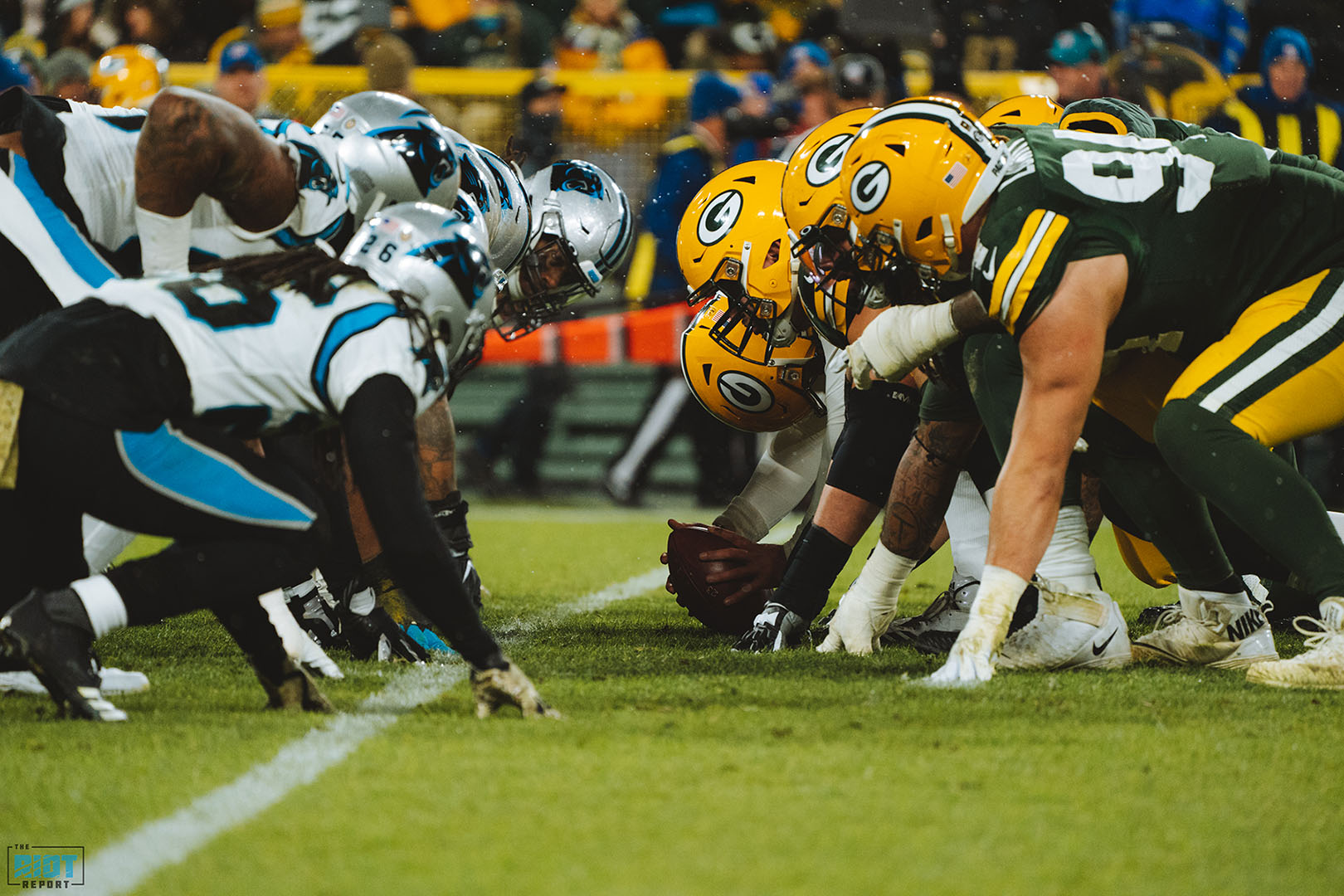
There are really two main reasons why teams look to rotate, namely that it allows teams to reduce the workload on individual players and allows teams to tailor their personnel to individual situations. Phil Snow spoke to the first of these recently.
“The rotation up front is really important,” said the Panthers new defensive coordinator. “You have to rotate; you can’t have these big guys who weighs 300-330 in there every snap. You’re going to wear them down, especially over the course of a sixteen-game schedule – so the rotation will be big in there.”
First, it is probably worth spending a moment to remember what the rotation looked like under Rivera.
For the most part, the Panthers’ defensive linemen had a pretty rigid position on the defense, whether that being edge rushers almost always working from the same side or defensive tackles rotating in pairs. The latter is something that is somewhat logical, as you develop pairings with complimentary skillsets and who are used to working in tandem. The Panthers under Rivera also did this in a fairly predictable way, almost always pairing a more run-focused defensive tackle as the 1-tech – think Lotulelei, Poe, Love or Cole – with a more pass-focused defensive tackle as the 3-tech – think Short, Butler or Edwards.
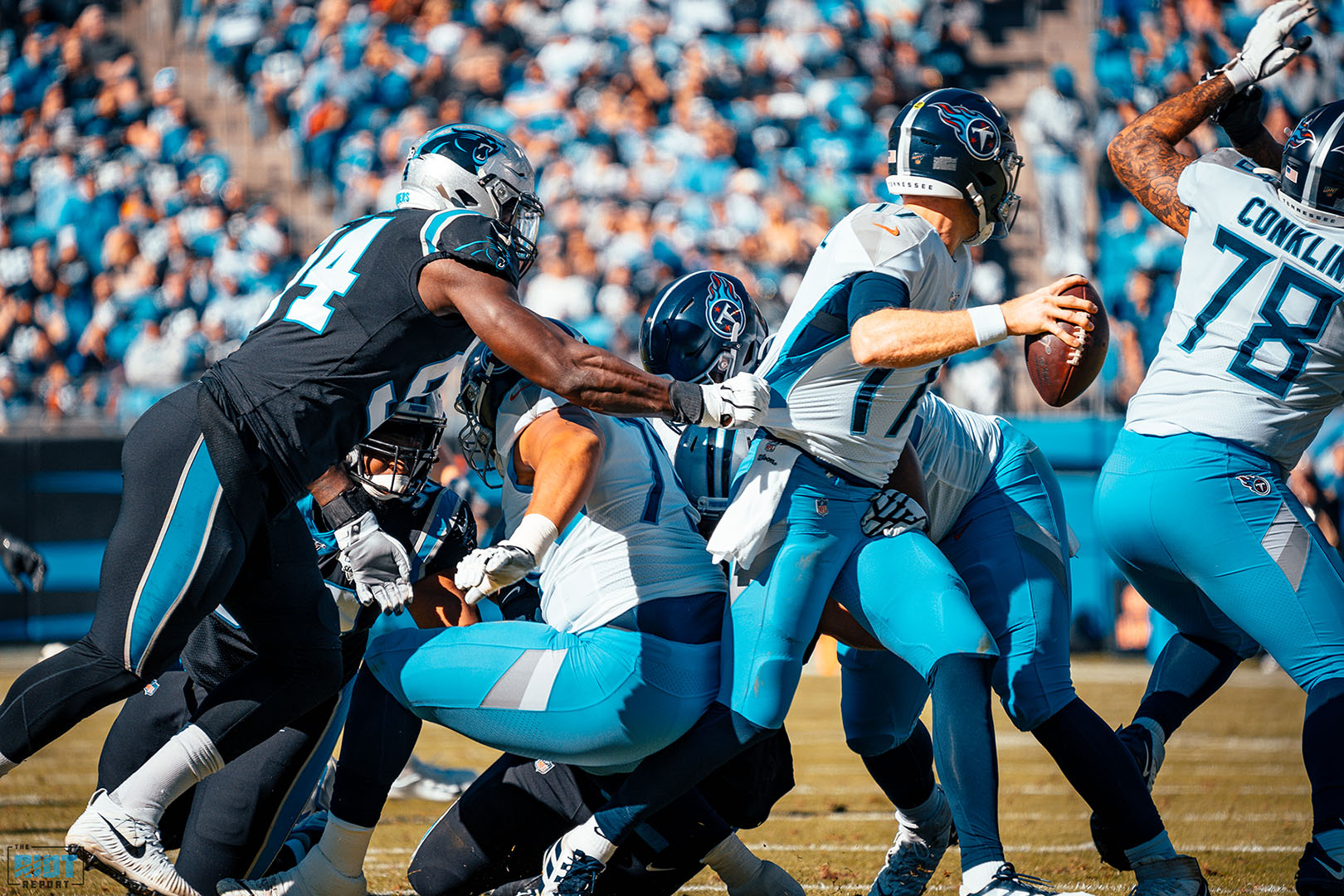 To be clear, there is noting particularly wrong with this, it allows for a complementary pairing for skillsets that allow the team to play both the run and the pass effectively.
To be clear, there is noting particularly wrong with this, it allows for a complementary pairing for skillsets that allow the team to play both the run and the pass effectively.
However, this does limit the ability of the coaching staff to tailor the defensive personnel to the situation. It also means that offenses can prepare each week knowing what they are likely to get in terms of personnel, and be well-drilled in order to counter that. It seems logical then that the Panthers would want to be able to mix-and-match their defensive linemen, but there is a barrier to doing this as well, namely that teams only tend to carry nine or ten defensive linemen, and that it is difficult to have both sufficient depth at every position across the line and a range of different functional combinations with that few players.
For this to be possible in a meaningful way then, a team would need multiple players across the defensive front who can play in multiple different positions depending on the situation and the other players around them, and that is exactly what the Panthers have been looking to do this offseason; something we’ll come back to later. It is also worth remembering though, that some players are going to be at least somewhat limited in their usage, and it is these players that form the outermost constraints on the rotational flexibility.
For the Panthers, that means players like Zach Kerr, Brian Burns and Marquis Haynes, while not all the same, between them, set certain restraints on the degree of flexibility.
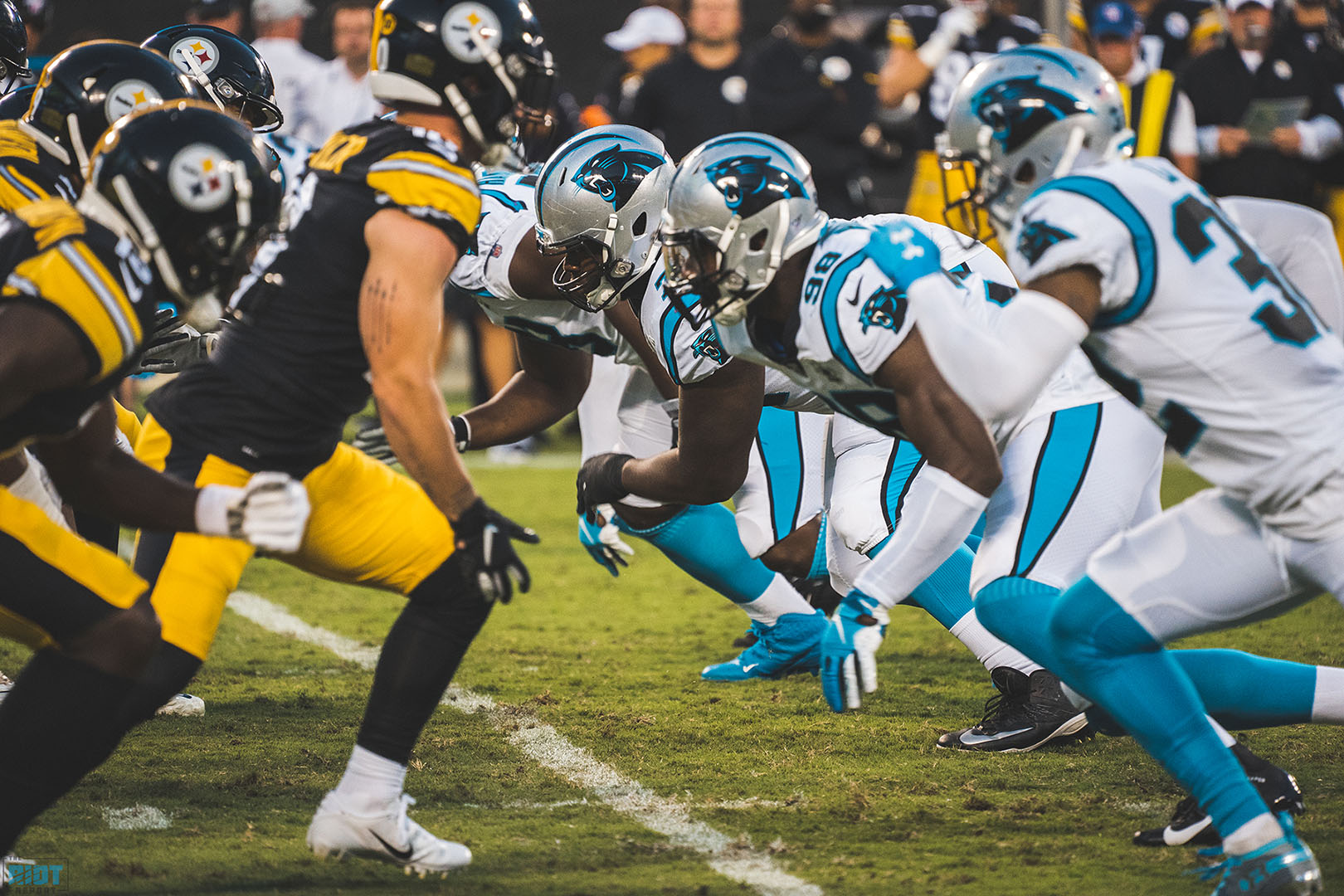
Burns and Haynes are only ever going to play on the edge, and while Phil Snow spoke about how he expects that both players are likely to play a little heavier than a year ago, whenever they are on the field it is going to be as an edge player. On the other end of the spectrum, at 334 lbs and with 18 QB hits in 75 career games (12 starts), Zach Kerr is very unlikely to spend much of the time playing outside of the A gap, as Phil Snow spoke to recently:
“He’s a big body, he’s hard to move in there,” Snow said about the bruiser from Arizona. “So in some of the defenses they have to play the 3 and 1 so he’ll play both, but he’s a big body, he’s played in the league so he’ll be hard to move.”
As Snow says, nobody on the interior in a 4-3 can play exclusively the one or the three, but it seems likely that Kerr will spend the vast majority of his time at the one, with this then setting the other end of the spectrum for the Panthers’ defensive line permutations. Now, having been quite abstract so far, let’s think about what this means in terms of the Panthers’ defensive tackle combinations. First of all, as we have mentioned, you have the pairing of Short and Brown, where Brown will likely play the one for the majority of the time. Then you have the option of Short playing the 3 with either Roy or Kerr playing the one, that’s three permutations.
This is where the positional flexibility comes in, let’s start with Marty Hurney’s description of how they can use Derrick Brown:
“He can be a nose, he can be a three technique,” Hurney said about the seventh overall pick. “He’s even gone out and been a five technique … so we can use him all across the front.”
Now, while it seems unlikely that Brown will spend a significant amount of time on the edge, what is clear from this is that the Panthers very much view Brown as being a three-tech as well as a one-tech. This then opens up a number of other permutations, and while when Brown and Short are on the field together it seems likely that Brown will mostly play the one tech, it seems likely that when paired with either Kerr or Roy, Brown will be the one who moves outside the guard.
If you’re keeping count, that is now five permutations.
The final questions that need to be answered when it comes to the defensive tackles is what happens when Roy and Kerr are on the field together – and is this something that is going to happen a huge amount? The first question was also something that both Rhule and Hurney touched upon after the draft, with Hurney in particular speaking to how he thinks Roy can be used:
“Bravvion is a big man that has really good feet,” Hurney said about the sixth-round pick. “I saw him at the East-West practice. I was there for one day and then watched tape and I think that he can play some (three-technique). He’s very light on his feet for a man his size.”
From this, and given what Phil Snow said earlier, it seems likely that with both on the field, it is Roy who would spend most of the time at three-tech. With that said, it does seem as though this is something that we won’t see a huge amount of, certainly far less than we say the Butler-Love or Edwards-Cole combinations in years past, with the lack of pass rush from this paring making them vulnerable to exploitation against the pass. This is a sixth permutation that fans should expect to see in 2020, but probably not a permutation they use a huge amount.
So far we have focused a lot on the defensive tackles, and while a lot of the pair-based rotation is indeed focused on the interior, it is also worth taking a moment to consider what the Panthers might be looking to do with their defensive ends.
Edge Flexibility
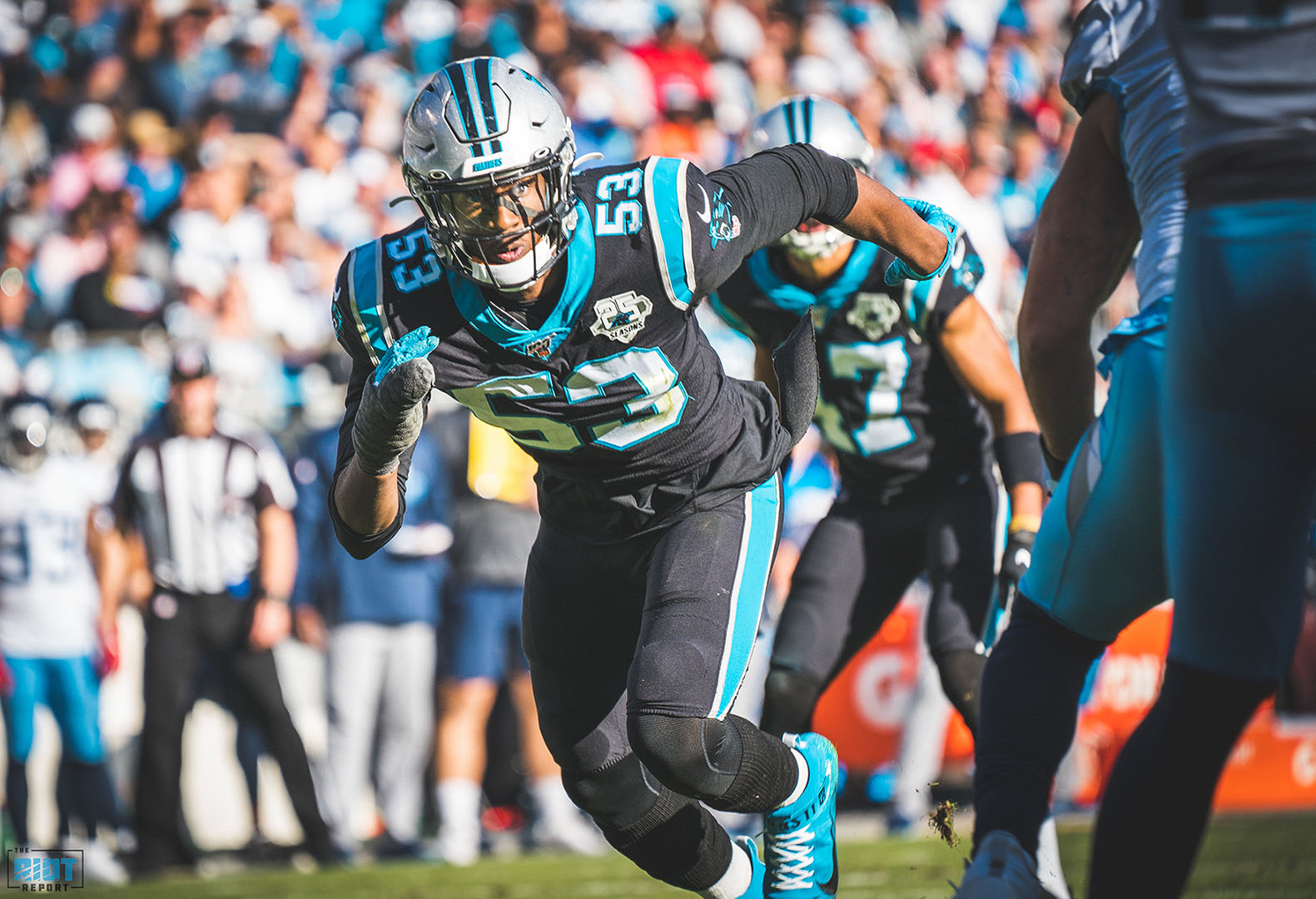
As mentioned earlier, Brian Burns and Marquis Haynes are almost exclusively going to be used as edge rushers, and while this might see some variation in terms of occasional 3-4 looks and their usage might be focused more towards passing situations than the more run-focused Weatherly, ultimately, they will always be lined up outside the tackle, and will be used in a variety of different situations and likely in a number of different permutations. So far, so conventional.
Where some 4-3 defenses have varied from this edge/interior distinction is in the use of a “strong-side” defensive end, where a larger defensive end can play outside on the edge for the most part where they offer a balance of run defense and pass rush, while also being able to kick inside in obvious passing situations where their quickness gives them an advantage against most NFL guards. Matt Rhule mentioned that he’s hoping second-round pick Yetur Gross-Matos can continue to put on weight and provide the team with a similar defensive end presence to go with Obada and Weatherly.
It is worth noting that this is a way in which both Gross-Matos and Weatherly have been used in the past as recently as last season, with Weatherly’s major usage in many games last season being as a 3-tech in obvious passing situations. Gross-Matos was also pretty clear about his ability to play all over the front:
“I have plenty of experience rushing inside and outside in college,” said the second-round pick on draft night. “I was asked to move all around the front four. I have no problem going inside or outside.”
Weatherly in particular is a ideal fit for this role, as he is able to use his length to great effect as a run defender on the edge, and then has the quickness to rush the passer either around the edge or on the interior; this is a skillset that Matt Rhule was also keen to emphasize when talking about Gross-Matos after the draft:
“One of the unique things about him is he’s a guy that can get on the edge, he can turn the corner, he’s got great body balance, and he’s also gone inside and been a 3-technique and rushed the quarterback,” Rhule said about Gross-Matos.
And if you were still unsure about whether this is something that we are likely to see from the Panthers in 2020, Phil Snow was also pretty unequivocal about it:
“Efe can go inside and rush, so can Weatherly go inside and rush, [he] did it in Minnesota. I talked earlier about different players having flexibility, we have some d-linemen that can go inside on third down and rush, and rush from the edge,” Snow said. “Not a lot of guys can do that, and we have two or three guys that have the flexibility to that. It gives us a chance to play different packages with them on the field because of their flexibility.”
Now, the knock-on effect of this is that it then increases the number of permutations the Panthers can offer inside, as with all four defensive tackles able to play the one-tech in combination with one of these strong-side defensive ends inside, the Panthers then have a further 12 permutations they can call upon. Given that this use of edge rushers at three-tech is likely going to be limited to passing situations as it does create some potential issues when looking to defend the run, it seems unlikely that Kerr will be used in combination with these guys a huge amount, the combination of a strong-side defensive end with either Brown or Short is something that is likely going to be a notable part of the Panthers’ defense going forwards.
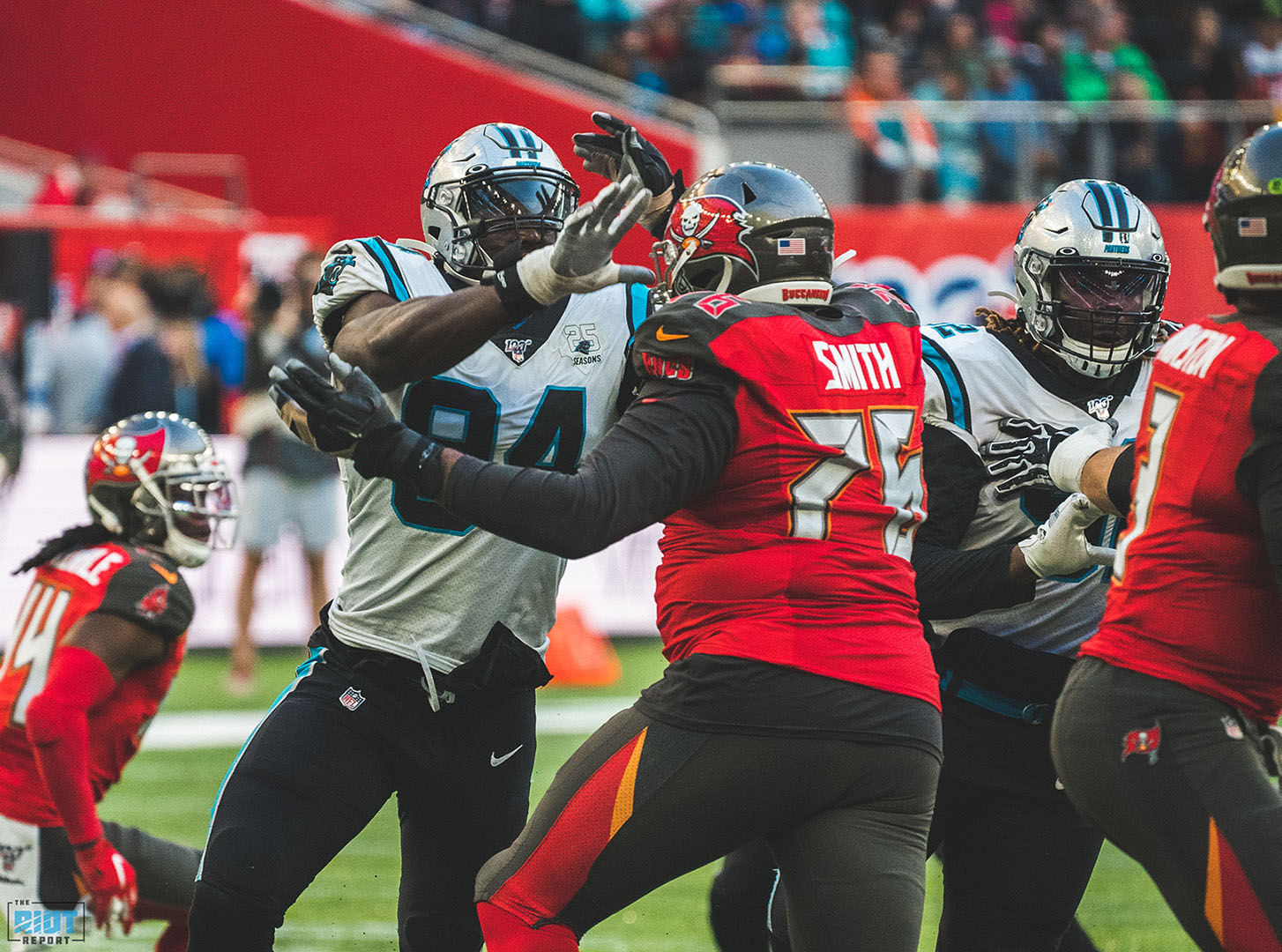
And don’t forget about Efe Obada’s ability to play multiple positions.
“I think there is flexibility there in his versatility,” Marty Hurney said about Obada, who played the five-tech in the 4-3 and the three-tech in the 3-4.” I think that Efe has a very good knack inside as a three-technique as far as getting penetration – so not only can he play outside at end but he can move inside in sub [packages] and he’s done that and done it well.”
The important thing with all this is not purely the number of different possible combinations the Panthers could run, as there is little sense in rotating constantly just to offer a new look, but rather that the more looks a defense can run as part of their general game plan, the harder it is for offenses to target one or two common combinations. For the Panthers, the defensive front has seen arguably the most investment over this offseason, and while it is now quite a young unit baring a couple of notable exceptions, given this investment there is likely an expectation that this will be one of the stronger groups on the roster and improve on one of the worst rush defenses in NFL history.
Rotation is just a part of what the Panthers will be looking to change on defense, and this is unlikely to bridge the gap from 5-11 to Super Bowl contender, but as we are all-too-frequently reminded, the NFL is a game of inches, and by looking to change how they rotate and how they use certain players, the Panthers might be able to move themselves a couple of inches closer to that mountaintop.

